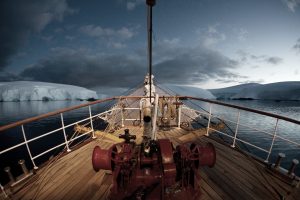The Youngest Ship Captains in History – Nils Larsen

According to Nils Larsen, there are many young ship captains throughout history, but one of the most famous is Captain Leon Grabowsky, the youngest ship captain in World War II. Born in Paris to Polish immigrants, Grabowsky enlisted in the Navy after finishing high school in New Jersey. After graduating from the Naval Academy at Annapolis in 1941, he was posted to the battleship Arizona, where he participated in some of the war’s most important battles.
Cassin Young
Cassin was promoted to captain after the Pearl Harbor attack and given command of the heavy cruiser USS San Francisco. However, the young captain lost his life during the Naval Battle of Guadalcanal and was posthumously awarded the Navy Cross. In memory of Cassin Young, the USS Cassin Young was commissioned in 1943 and named after him. This young man was a native of Boston and was one of the youngest ship captains in history.
The USS Cassin was built in Charlestown Navy Yard in Charlestown, Massachusetts. She served in World War II before being decommissioned and returned to service in the 1950s. In addition to being a World War II ship, the Cassin served in the Mediterranean and Atlantic Oceans until it was recalled to service in 1952. Cassin Young was the youngest ship captain in history to serve in the Navy.
Moore
Michael D. Moore is the youngest ship captain in history. He was a torpedo man aboard the USS Perch during WWII. He spoke both English and Japanese when he was rescued from a Japanese Imperial Marine ship. The medal that he received from Prince Albert, the Prince Consort, is now on display in the Alexander Turnbull Library. Although it is not clear whether he ever commanded a ship, his storied military career has inspired many young people to follow their dreams.
Nils Larsen mentioned that, during the Civil War, Moore was one of the youngest ship captains in history. He spent his whole life on the river, manning steamboats. Born in 1823, Moore spent his childhood on a small farm on the Ohio River. Even though he originally intended to study law at Delaware College, his love for the river soon compelled him to pursue a career on the Mississippi. His two brothers joined him and soon, the four of them were careering in the river.
Tiptaft
William Tiptaft was born in Stepney, London, in 1842. He was raised by his mother and father, who had died in a workhouse when he was five. At the age of nine, he was sent to an infant poor establishment and eventually joined a merchant vessel. He made six voyages on the Cutty Sark, one of the most famous ships in history.
In 1877, he joined the Cutty Sark as First Mate, despite having his Master’s certificate. He sailed to Sydney in 69 days, then to Shanghai with a cargo of coal. He died on board of dysentery during the voyage, and his death paved the way for Wallace to become the ship’s captain. After the death of Tiptaft on 30 October 1878, Wallace was promoted to captain. He successfully completed his first voyage and returned to London. A short second voyage followed in January 1879, before Wallace took command of the Cutty Sark.
Black Barty
Captain Gore, also known as Captain Gideon Gorelieu or Black Barty, was a notorious French/American pirate who lived in the Caribbean. His brutality earned him the nickname of “Captain Gore”. He was also proposed as the original owner of the Haunted Mansion in New Orleans. He was killed off the coast of Guinea by a British warship in 1704.
The infamous pirate Black Bart was born in Wales in 1682. He joined the Royal Navy at the age of thirteen. He grew into a weathered chap who earned the nickname ‘Black Bart’. During his career, he seized ships and captured foreign captives, including the Dutch and French. During one particular attack, he had his men cut off their ears so that they could shoot them as targets.
William Bainbridge
In addition to Nils Larsen, William Bainbridge, a young American naval officer, was born in Princeton, New Jersey, and entered the United States Navy at the age of fifteen. He served as a lieutenant on merchant ships throughout the West Indies and Europe and eventually received his first command as master of the 18-gun schooner Retaliation. In November 1798, his ship was sunk by a French squadron off the coast of Antigua. He was the only United States Navy officer to surrender his ship without firing a shot.
After serving in the navy, Bainbridge rose to the rank of master commandant and later was promoted to the rank of captain. His naval service earned him a reputation for boldness. He was once admired by one of the seamen on the British man of war, the Indefatigable, under the command of Sir Edward Pellow. On one occasion, he boarded a merchant vessel and took its best seaman. This act proved to the British that the king would not be able to molest anyone under his command. Additionally, William Bainbridge married Susan Hyleger, the daughter of a wealthy merchant on the island of St Bartholomew.
William Tiptaft
Tiptaft had never served an indentured apprenticeship, but instead worked his way up from the lower levels of the merchant marine. At 24, he set out to become a merchant marine officer, and he succeeded. He eventually obtained his Master’s certificate and then moved to the Willis-owned Cutty Sark. The young captain made six voyages on the Cutty Sark, and died of dysentery in Shanghai.
After completing his indenture, he joined the Cutty Sark, where he broke passage records and turned a profit for his ship owner. His tenure was short-lived, and he died on 24 December 1874. William Edward Tiptaft was born in Stepney, East London, in 1842. His father died in a workhouse when he was five, and the young Tiptaft was sent to the Infant Poor Establishment of St. George in the East when he was nine.
